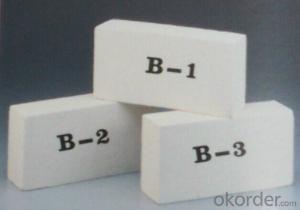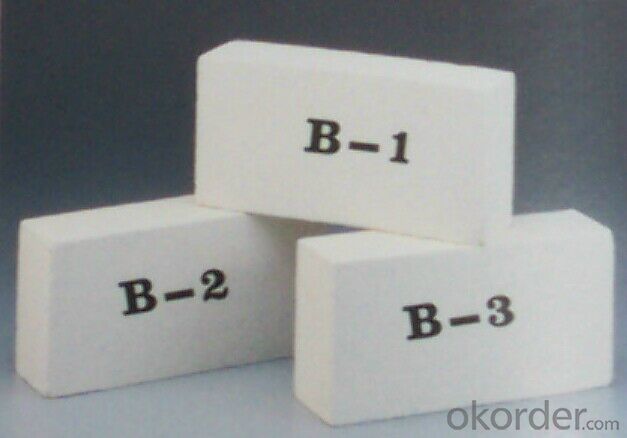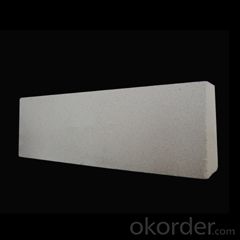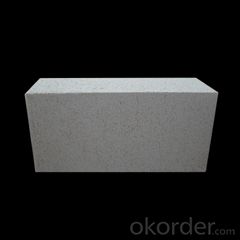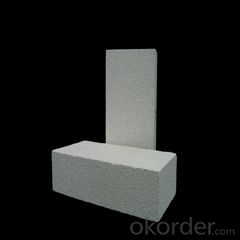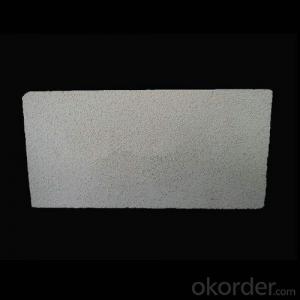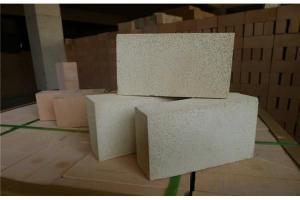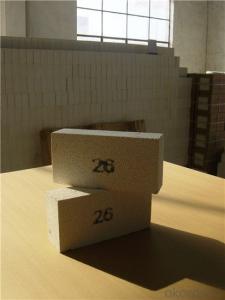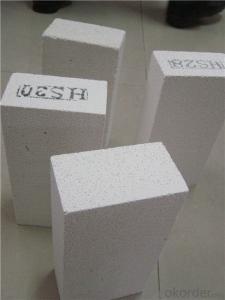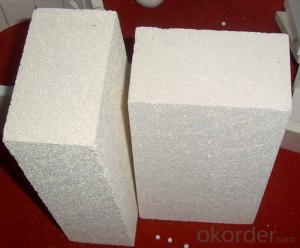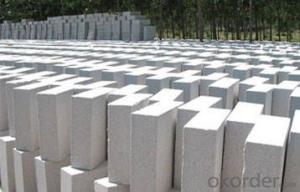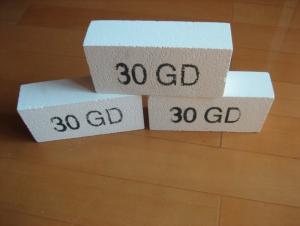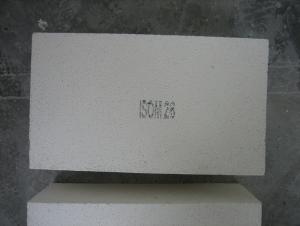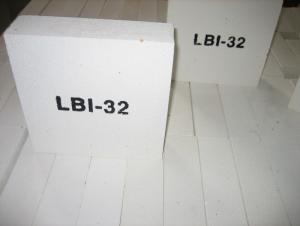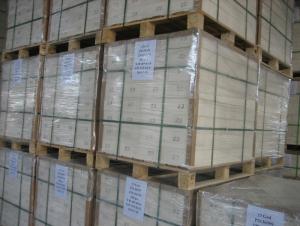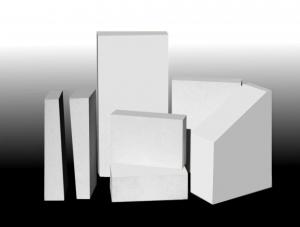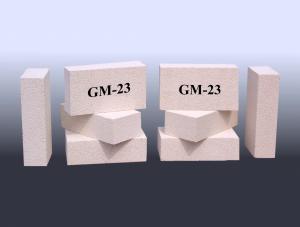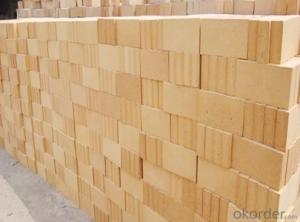Insulating Fire Brick Mullita Ladrilo Refractario Refractarios Aislantes JM 27
- Loading Port:
- Shanghai
- Payment Terms:
- TT OR LC
- Min Order Qty:
- 5000 kg
- Supply Capability:
- 5000000 kg/month
OKorder Service Pledge
OKorder Financial Service
You Might Also Like
Mullita ladrillo refractario refractarios aislantes JM 23
Aislamiento de calor de la serie okorder ladrillo
La serie okorder ladrillo es un eficaz aislamiento térmico, ahorro de energía, baja en carbono, la protección del medio ambiente avanzado, de acuerdo a la norma ASTM la fabricacion de productos.Okorder serie productos son mejores Li Ning y aislamiento en todo tipo de hornos industriales en el sector metalurgico, aluminio, petroquímica, energía eléctrica y materiales de cerámica de vidrio.Pueden ser utilizados como parte de la capa de aislamiento termico o non - Fusion.Los productos han sido ampliamente utilizados en el horno, logra resultados satisfactorios.
Aplicación de la preservación del calor de ladrillo
Industria metalurgica: Blast Furnace, hot alto horno, horno de calefaccion, etc.
Industria petroquímica: etileno horno horno de cracking, producción de hidrógeno, reformador primario, horno de calefaccion, etc.
Industria: horno de rodillos de cerámica, horno, etc.
Industria del vidrio: vidrio horno regenerador, etc.
Industria de carbono: carbono horno, etc.
Sector de la electrólisis de aluminio: aluminio reducción celular, etc.
Otras industrias: horno de tunel, Servicio de horno, etc.
Ventajas de ladrillo del aislamiento de calor
Baja conductividad térmica: mayor porosidad traerá buen aislamiento termico, ahorro de energía.
Alta resistencia al aplastamiento: alta resistencia al aplastamiento, la estabilidad de volumen.
Almacenamiento de calor: pequeños de almacenamiento de calor bajo para absorber más calor, ahorro de efecto es evidente.
Gao Chundu: hierro, metal alcalino de bajo contenido de impurezas.
El tamaño exacto: tamaño de ladrillo precision de procesamiento, forma especial de corte y molienda, acelerar el ladrillo.
Foto de ladrillo aislante
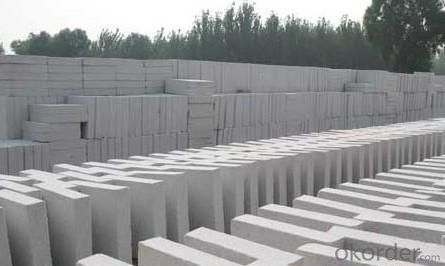
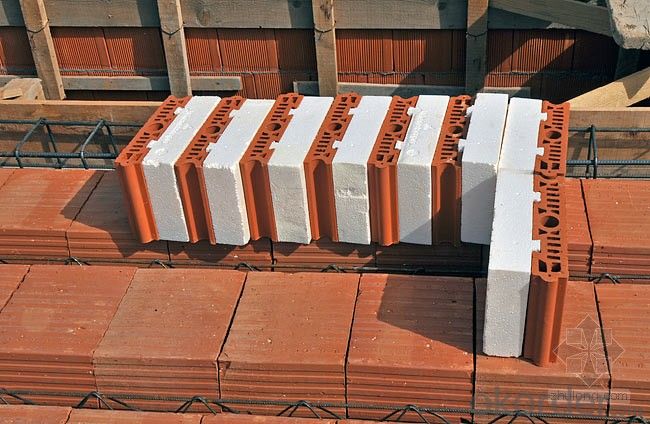

Problema común soluciones
1.¿Que productos tienes?
Disponemos de todo tipo de ladrillos refractarios, refractarios materiales de fundicion, mortero, cemento, productos de fibra cerámica, etc.
O usted puede hojear nuestros productos a elegir lo que usted necesita.
2.¿Cómo controlar la calidad del producto?
Con sistema de estricto control de calidad en la seleccion de materiales y el proceso de producción, tenemos la calidad de materiales refractarios y productos de fibra cerámica para satisfacer las necesidades de los clientes.
Desde la seleccion de materias primas, la calidad de nuestro control para empezar.El certificado de calidad de la materia prima es necesaria, cada lote de los productos serán probados en el uso de la línea.En el proceso de producción, el control de calidad por los trabajadores, y luego cada pieza de la clasificación, y mediante la supervisión de la calidad y la inspección.
3.¿Me puedes dar una breve introducción a la aplicación de su producto?
Mi empresa se dedica principalmente en refractarios en el acero, cemento, vidrio, cerámica, petroquímica, energía eléctrica y otras industrias.
4.¿Qué información necesitas si te necesito?
Con el fin de seleccionar los productos adecuados, que nos proporcionará la información, tales como los Estados Unidos, datos técnicos, cantidad de pedido, la aplicación del producto, etc.
Si usted tiene alguna pregunta, por favor pongase en contacto con nosotros.
- Q: Do insulating fire bricks have a high fireproof rating?
- Yes, insulating fire bricks have a high fireproof rating. They are designed to withstand high temperatures and provide excellent insulation, making them ideal for applications where fire resistance is necessary.
- Q: What is the price of concrete self insulation bricks?
- Insulation brick prices also have a great relationship with the material and workmanship, such as clay brick price is much lower than high alumina brick, mullite and corundum brick prices will be higher.
- Q: Can insulating fire bricks be custom-made?
- Yes, insulating fire bricks can be custom-made. Insulating fire bricks are typically made from lightweight materials such as vermiculite, perlite, or refractory fibers, which can be easily molded into various shapes and sizes. This flexibility allows manufacturers to create custom-made insulating fire bricks to meet specific requirements and applications. Customization options may include variations in dimensions, thermal conductivity, compressive strength, and density. By tailoring the composition and design of insulating fire bricks, they can be optimized for specific temperature ranges, insulation requirements, and environmental conditions. Therefore, customers can work with manufacturers to develop custom solutions that best suit their unique needs.
- Q: Can insulating fire bricks be used in paper mills?
- Yes, insulating fire bricks can be used in paper mills. Insulating fire bricks are commonly used in industries that require high-temperature insulation, such as steel, glass, and ceramics. In paper mills, where processes like drying, heating, and burning occur, insulating fire bricks can be used to line kilns, furnaces, and other equipment to provide insulation and prevent heat loss. These bricks have excellent thermal insulation properties and can withstand high temperatures, making them suitable for use in paper mills where heat is a crucial component of the manufacturing process. Additionally, insulating fire bricks are lightweight and have low thermal conductivity, allowing for efficient heat retention and energy savings.
- Q: Can insulating fire bricks withstand thermal shock?
- Insulating fire bricks possess exceptional thermal insulation properties and are commonly employed in situations where thermal shock does not pose a significant issue. While these bricks can endure moderate temperature fluctuations, they are not explicitly engineered to withstand thermal shock. Thermal shock arises when there is an abrupt alteration in temperature, leading to strain and possible harm to the substance. Insulating fire bricks are more vulnerable to thermal shock in comparison to dense fire bricks, which are explicitly crafted to endure drastic temperature variations. If thermal shock is a concern in your application, it is advisable to contemplate alternative refractory materials that are specially designed to withstand rapid temperature changes.
- Q: Do insulating fire bricks have a high resistance to spalling?
- Insulating fire bricks possess a remarkable ability to resist spalling. Spalling occurs when the surface of a material breaks or flakes off, and fire bricks are particularly susceptible to this phenomenon due to exposure to intense heat and thermal shock. However, insulating fire bricks are specially engineered to endure these extreme temperatures and thermal cycling, resulting in a significant resistance to spalling. These bricks are crafted from top-notch refractory materials like alumina or silica, renowned for their exceptional thermal shock resistance. Furthermore, they are manufactured with low thermal conductivity, effectively reducing heat transfer and minimizing the chances of spalling. In summary, insulating fire bricks are the perfect choice for applications demanding high spalling resistance, such as furnaces, kilns, and other environments with elevated temperatures.
- Q: Are insulating fire bricks resistant to metal penetration?
- Insulating fire bricks are generally resistant to metal penetration. These bricks are made from refractory materials, which have high melting points and are designed to withstand high temperatures. They are often used in applications where they are exposed to extreme heat, such as in furnaces and kilns. Insulating fire bricks have low thermal conductivity, meaning they are good at preventing heat transfer. This property helps to keep the outer surface of the bricks cool, even when the interior is exposed to intense heat. As a result, these bricks can resist the penetration of molten metal. However, it is important to note that the resistance of insulating fire bricks to metal penetration can vary depending on the specific composition and quality of the bricks. Some lower-grade bricks may not provide the same level of resistance as higher-quality ones. Additionally, the duration and intensity of the heat exposure can also affect the bricks' resistance. In conclusion, while insulating fire bricks are generally resistant to metal penetration, it is crucial to consider the specific characteristics and quality of the bricks being used, as well as the conditions in which they are exposed to heat.
- Q: Can insulating fire bricks be custom-made?
- Indeed, it is possible to manufacture insulating fire bricks according to specific specifications. Typically, insulating fire bricks are crafted using lightweight materials like vermiculite, perlite, or refractory fibers, which are easily shaped into various forms and sizes. With this versatility, manufacturers can produce tailor-made insulating fire bricks to cater to specific demands and purposes. The customization options available may involve alterations in dimensions, thermal conductivity, compressive strength, and density. By adjusting the composition and design of the insulating fire bricks, they can be optimized to function optimally within specific temperature ranges, insulation requirements, and environmental conditions. Consequently, customers have the opportunity to collaborate with manufacturers in order to develop personalized solutions that perfectly align with their individual requirements.
- Q: Can insulating fire bricks be used in the construction of lime production linings?
- Yes, insulating fire bricks can be used in the construction of lime production linings. These bricks are designed to withstand high temperatures and provide insulation, making them suitable for lining furnaces and kilns used in lime production. They can help maintain the desired temperature, conserve energy, and improve the efficiency of the lime production process.
- Q: Can insulating fire bricks be used for insulation in steel mills?
- Yes, insulating fire bricks can be used for insulation in steel mills. Insulating fire bricks are specifically designed to withstand high temperatures and are used in various industrial applications, including steel mills, to provide thermal insulation and reduce heat loss. They help maintain consistent temperatures, improve energy efficiency, and protect equipment and structures from extreme heat.
Send your message to us
Insulating Fire Brick Mullita Ladrilo Refractario Refractarios Aislantes JM 27
- Loading Port:
- Shanghai
- Payment Terms:
- TT OR LC
- Min Order Qty:
- 5000 kg
- Supply Capability:
- 5000000 kg/month
OKorder Service Pledge
OKorder Financial Service
Similar products
Hot products
Hot Searches
Related keywords
